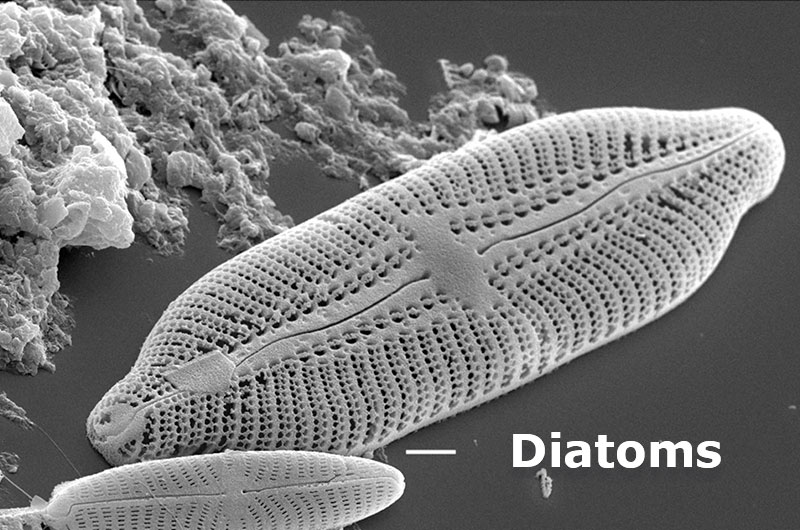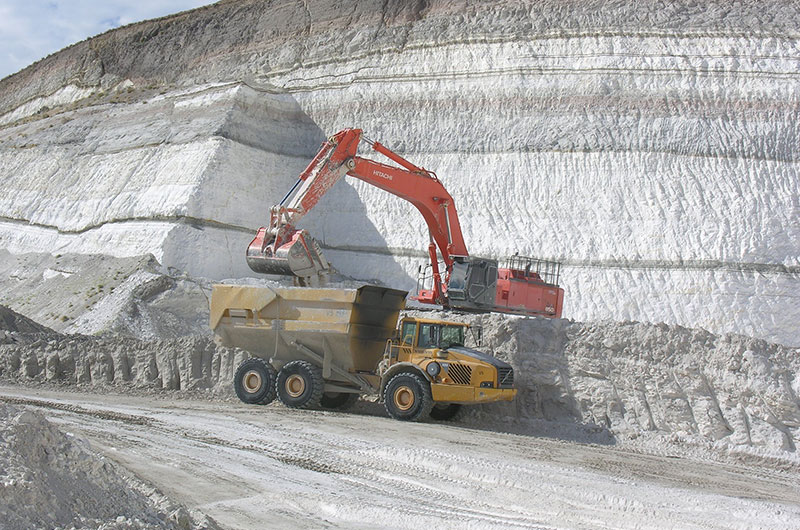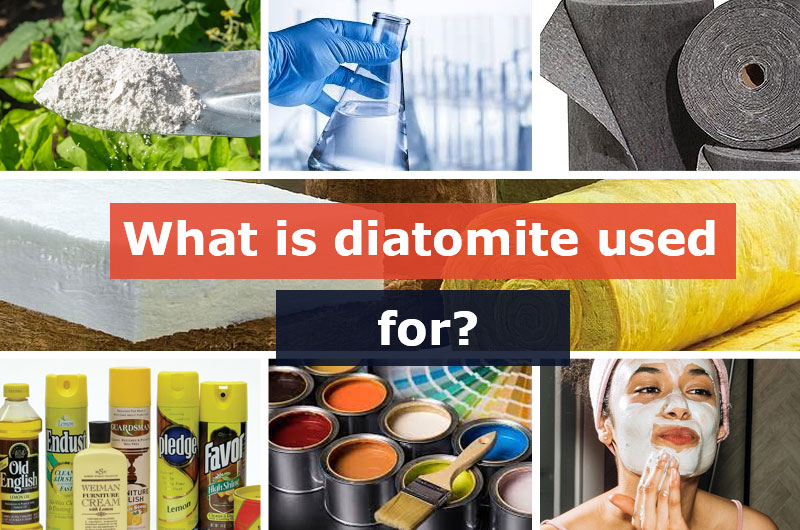Diatomite is derived from the fossilized remains of microscopic aquatic plants known as diatoms. Mined extensively in Kenya, this unique mineral is valued for its versatility and wide range of applications.

In this blog, we will delve into the fascinating world of diatomite, exploring its formation, its presence in Kenya, the complex processes involved in processing this mineral and its specific uses.
Understanding diatomite
Diatomite, often referred to as diatomaceous earth, is a sedimentary rock composed of the siliceous skeletal remains of diatoms, a type of algae that flourished millions of years ago in freshwater lakes and oceans.

These microscopic organisms extract silica from the water to build their exoskeletons, creating a porous and lightweight structure.
Over time, the accumulated diatomaceous earth undergoes geological processes, forming deposits rich in diatomite.
Diatomite deposits can range in color from white to light brown, depending on the mineral content and impurities present.
Do you know the mineral properties of diatomite?
- Chemical formula: SiO2. It is a nearly pure sedimentary deposit composed almost entirely of silica.
- Rock type: Siliceous sedimentary rock
- Is it a metallic mineral: No, it is a pulverized non-metallic mineral
- Hardness: 6
- Color: White
- Texture: It feels smoothly and powdery
- Pros (Most valuable properties): Low density, high porosity, high surface area, abrasion resistance, insulating properties, inertness, absorbency, brightness and high silica content.
- Cons: Is diatomite safe for humans? It poses health risks because inhaling large amounts can cause coughing and/or shortness of breath, as well as skin irritation, dryness, and eye irritation.
Diatomite mining in Kenya
Kenya stands as a significant player in the global diatomite market, boasting substantial deposits of this valuable mineral.
The country's Rift Valley region is particularly abundant in diatomite, with deposits found in areas such as Kariandusi, Gilgil, and Kokitoin.
The favorable geological conditions in these regions have made Kenya a key player in the diatomite mining industry.

The extraction of diatomite in Kenya involves a systematic process to ensure the preservation of its unique properties.
Mining operations typically begin with prospecting to identify areas rich in diatomite deposits. Once a suitable location is identified, exploration and drilling activities commence to assess the quality and quantity of the diatomite.
Mining methods vary, but commonly include open-pit mining or quarrying. Open-pit mining involves the removal of overburden to expose the diatomite deposits, which are then extracted using heavy machinery. Quarrying involves removing diatomite blocks from the earth's surface.
Diatomite processing and uses
Diatomaceous earth is a friable, earthy, very fine-grained siliceous sedimentary rock. Its processing is a meticulous process that transforms raw diatomite into a variety of valuable products.
Processing diatomite is a meticulous process that transforms raw diatomaceous earth into a variety of valuable products.
The following steps outline the typical diatomite processing procedure in Kenya:
-
1 Diatomite extraction:
The mined diatomite undergoes primary processing to remove impurities and debris. This may involve the use of a jaw crusher, an impact crusher, and a vibrating screen for crushing and screening to obtain a uniform size.
-
2 Calcination:
Calcination is a critical step where diatomite is subjected to high temperatures to remove any organic matter and water content. The rotary kiln is the key equipment. This process enhances the mineral's porosity and absorption properties.
-
3 Milling:
After calcination, diatomite is milled to achieve the desired particle size. This step is crucial for enhancing its reactivity and adsorption properties. When ground, it results in an extremely low-density powder known as Diatomaceous Earth (DE). A Raymond mill is generally sufficient for this purpose. For finer powders, an ultrafine mill or a vertical mill is recommended.
-
4 Drying:
The diatomite undergoes a drying process to remove excess moisture. This step ensures that the diatomaceous earth retains its desired properties and is ready for further applications. It is recommended to use a rotary drum dryer with high drying efficiency or a specialized clay dryer to reduce the moisture to less than 1%.
-
5 Classification:
The milled diatomite is classified based on particle size to meet the requirements of different applications. This step ensures the uniformity and consistency of the final product.
Due to its unique properties of high porosity, low density, and excellent absorbent qualities, the diatomite products in Kenya contribute to sectors, such as agriculture, filtration, construction, and health and beauty.

What is diatomite used for?
- Agricultural grade diatomite: Used as a soil amendment, diatomaceous earth improves soil structure, water retention, and nutrient availability for plants. Furthermore, diatomaceous earth is an effective anti-caking agent in agricultural fertilizers and an excellent inert carrier for animal feed and pesticides.
- Filter aids: Superior filtration properties remove impurities and fine particles from liquids in the beverage, pharmaceutical and water treatment industries. For developing countries, diatomite can produce low-cost, high-performance water filtration devices to provide people with drinking water and reduce the spread of disease, especially during disaster relief.
- Industrial absorbents: Diatomite's absorbent properties make it ideal for use in cat litter, spill control, and industrial absorbents. It can absorb liquids such as oils and chemicals, aiding in environmental protection.
- Insulation materials: Due to its low thermal conductivity, diatomite is used in the manufacturing of insulating construction materials.
- Abrasives: Diatomite's abrasive qualities find application in the manufacturing of polishes, cleansers, and even toothpaste.
- Paints and coatings: Diatomaceous earth is used in the manufacturing of paint and coatings. It is an excellent matting agent that enhances the texture and durability of these products while contributing to their fire-retardant properties.
- Beauty good: In cosmetics, super-absorbent diatomaceous earth powder is an ideal 100% natural ingredient in deodorants and antiperspirants. When used in facial masks, diatomaceous earth significantly reduces the drying time of the clay.
Conclusion
Originating from the microscopic world of diatoms, diatomite has evolved into a versatile mineral that plays a key role in a variety of industries.
In Kenya, the mining and processing of diatomite contributes significantly to the economy while providing essential raw materials for a variety of applications. Continue to explore and utilize its potential to further shape our future!

